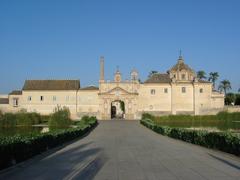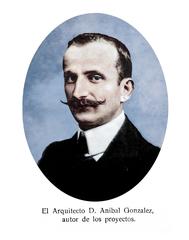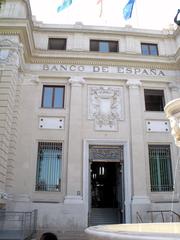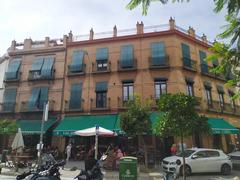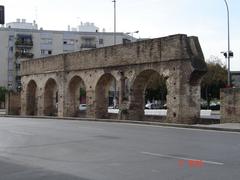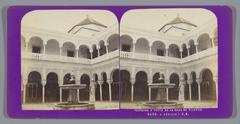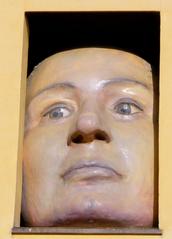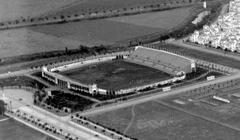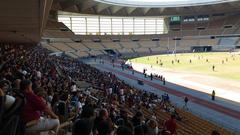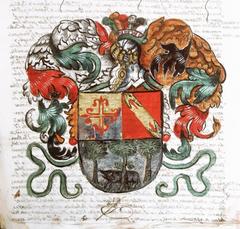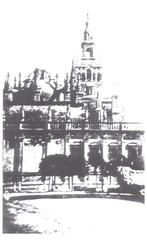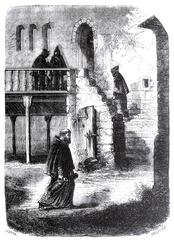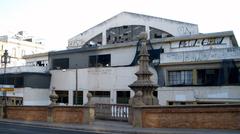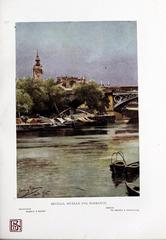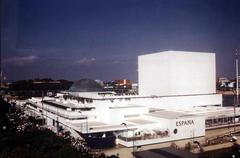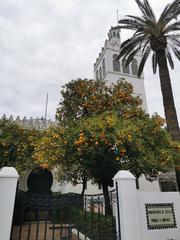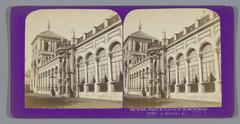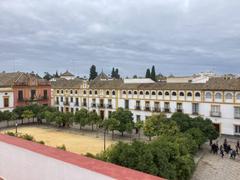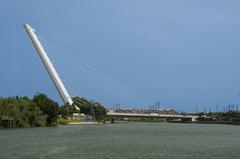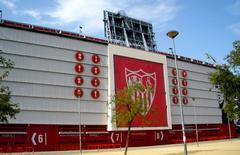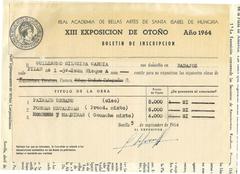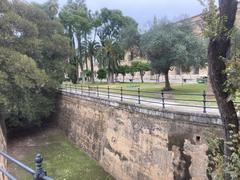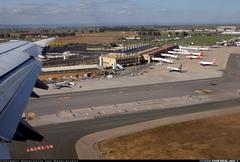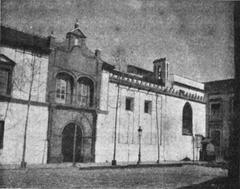
Cemetery of San Fernando Seville: Visiting Hours, Tickets, and Historical Significance
Date: 04/07/2025
Introduction
The Cemetery of San Fernando in Seville is much more than a final resting place—it is a remarkable historical and cultural landmark, often described as the city’s “open-air museum.” Established in the mid-19th century as part of Spain’s sanitary reforms, it not only reflects the evolution of public health policy but also serves as a unique showcase for funerary art, social history, and communal identity. This comprehensive guide explores the cemetery’s origins, artistic heritage, notable burials, practical visitor information, and its enduring role in Seville’s cultural life (Ayuntamiento de Sevilla; Patrimonio Sevilla; ABC de Sevilla).
Table of Contents
- Historical Context and Origins
- Architectural Layout and Artistic Heritage
- Notable Monuments and Burials
- Religious and Minority Sections
- Visiting Information
- Nearby Attractions
- FAQs
- Conclusion
- References
Historical Context and Origins
The Cemetery of San Fernando (Cementerio de San Fernando) opened in 1852, following a royal decree in 1833 that required Spanish cities to move burials outside urban centers to improve public health (Ayuntamiento de Sevilla). Located on the then-outskirts of Seville in the San Jerónimo district, the cemetery was designed to accommodate the city’s growing population while reflecting a modern attitude toward hygiene and urban planning. Its establishment coincided with the European “garden cemetery” movement, which emphasized landscaped, monumental spaces for both burial and public contemplation (ABC de Sevilla).
Architectural Layout and Artistic Heritage
Layout and Design
San Fernando Cemetery features a neoclassical layout, with a monumental entrance marked by Doric columns and a triangular pediment (Patrimonio Sevilla). The grounds are organized into a rational, grid-like plan with wide, cypress-lined avenues, making it easy to navigate and emphasizing a sense of order and dignity.
Funerary Art and Styles
The cemetery is celebrated for its vast collection of funerary art, spanning neoclassical, neo-Gothic, Art Nouveau, eclectic, and regional styles. Mausoleums and tombs display motifs such as angels, laurel wreaths, broken columns, and Sevillian ceramics, reflecting both artistic trends and local traditions (El Correo de Andalucía; Diario de Sevilla).
Noteworthy structures include:
- Pantheon of the Brotherhoods: Honoring Seville’s religious brotherhoods, central to Semana Santa traditions.
- Mausoleum of the Bullfighters: A unique monument dedicated to legendary matadors Joselito “El Gallo” and Juan Belmonte, adorned with dramatic reliefs (ABC de Sevilla).
- Chapel of the Marqueses de Pickman: A neo-Gothic structure with stained glass and intricate stonework.
Among the most iconic sculptures is Antonio Susillo’s “Cristo de las Mieles” (Christ of the Honey), famous for the legend of honey dripping from its mouth, attributed to bees nesting inside and now a symbol of local folklore (El Correo de Andalucía).
Notable Monuments and Burials
The cemetery is the final resting place for many of Seville’s notable citizens, whose graves attract visitors from around the world.
Artists and Cultural Icons
- José Villegas Cordero (1844–1921): Renowned painter and former director of the Prado Museum, with a tomb marked by a painter’s palette (Lyfe Abroad).
- Rafael Montesinos (1920–2005): Prominent poet.
- Juanita Reina (1925–1999): Celebrated singer, “La Reina de la Copla.”
- Antonio “El Bailarín” (1921–1996): Famous flamenco dancer (Turismo Sevilla).
Bullfighters
- Joselito “El Gallo” (1895–1920): One of Spain’s most celebrated matadors.
- Rafael “El Gallo”: Joselito’s brother.
- Ignacio Sánchez Mejías (1891–1934): Immortalized by Federico García Lorca.
- Francisco Rivera “Paquirri” (1948–1984): Renowned matador.
- Juan Belmonte (1892–1962): The “Revolutionary of Bullfighting” (Turismo Sevilla; Endless Mile).
Political and Social Leaders
- Diego Martínez Barrio (1883–1962): President of the Second Spanish Republic (Sevilla.org).
- Various businesspeople, philanthropists, and other influential Sevillanos (Lyfe Abroad).
Religious and Minority Sections
Reflecting Seville’s diverse history, the cemetery also includes:
- Non-Catholic Christian Section: Near the entrance, serving Protestant and other denominations (Endless Mile).
- Jewish Cemetery: A walled section with tombstones oriented toward Jerusalem.
- Muslim Cemetery: Established in 1936 for Moroccan soldiers; closed to the public (Endless Mile).
These areas underscore the cemetery’s role as a symbol of religious pluralism and social complexity.
Visiting Information
Hours and Admission
- General Opening Hours: Typically daily from 8:00 AM to 7:00 PM, with possible changes on holidays or during special events (Ayuntamiento de Sevilla). Confirm current hours before visiting.
- Tickets: Entry for self-guided visits is free. Guided or dramatized tours (such as “Don Juan Tenorio”) require tickets, generally €10–12, with a small online booking fee (AndaluNet).
Accessibility
The cemetery is largely accessible, with wide, paved avenues suitable for wheelchairs and strollers. Some older areas may be less navigable; benches and public restrooms are available near the entrance.
Tours and Events
- Guided Tours: Offered regularly, focusing on history, art, and notable figures. Tours may be in Spanish, with some English options or audio guides (TravelBugTonic).
- Dramatized Events: Themed performances, such as “Don Juan Tenorio,” blend theater and cemetery history.
- Audio Tours: GPS-guided audio tours are available via platforms like VoiceMap.
Etiquette and Tips
- Dress modestly and respectfully.
- Maintain quiet, particularly during ceremonies or family visits.
- Photography is permitted for personal use—avoid photographing mourners or ongoing funerals.
- Remain on marked paths and avoid disturbing gravesites.
- No recreational activities or picnicking are allowed.
How to Get There
Located north of Seville’s Old Town, the cemetery is accessible by bus (lines 27 and C1/C2), taxi, or a 15-minute drive from the city center. Parking is limited, especially during holidays; public transport is recommended.
Nearby Attractions
Combine your visit with nearby landmarks such as the Plaza de España, Parque de María Luisa, the San Lázaro Hospital, and Seville Cathedral. Public transport connects these sites conveniently, allowing for a culturally rich day in Seville.
FAQs
Q: What are the Cemetery of San Fernando’s visiting hours?
A: Usually 8:00 AM to 7:00 PM daily; hours may vary—check the official website before visiting.
Q: Is there an entrance fee?
A: General admission is free. Guided or dramatized tours require tickets.
Q: Are tours available in English?
A: Some tours are in English or offer audio guides.
Q: Is the cemetery wheelchair accessible?
A: Main avenues are accessible; some older areas may be challenging.
Q: Can I take photographs?
A: Yes, but be discreet and avoid photographing other visitors.
Q: How can I locate a specific grave?
A: Maps are available at the entrance; staff can assist.
Conclusion
The Cemetery of San Fernando is a profound testament to Seville’s history, artistry, and social diversity. From neoclassical monuments to the graves of legendary bullfighters and artists, the cemetery offers a unique perspective on the city’s past and present. By respecting the site’s traditions and planning ahead with up-to-date visitor information, you can enjoy a meaningful, enriching experience. Don’t miss the opportunity to make this historic necropolis part of your exploration of Seville’s cultural treasures.
For more travel inspiration and cultural guides, download the Audiala app and follow our channels for the latest updates.
References
- This is a sample text. (Ayuntamiento de Sevilla)
- This is a sample text. (ABC de Sevilla)
- This is a sample text. (El Correo de Andalucía)
- This is a sample text. (Lyfe Abroad)
- This is a sample text. (TravelBugTonic)
- This is a sample text. (Diario de Sevilla)
- This is a sample text. (AndaluNet)
- This is a sample text. (Endless Mile)



